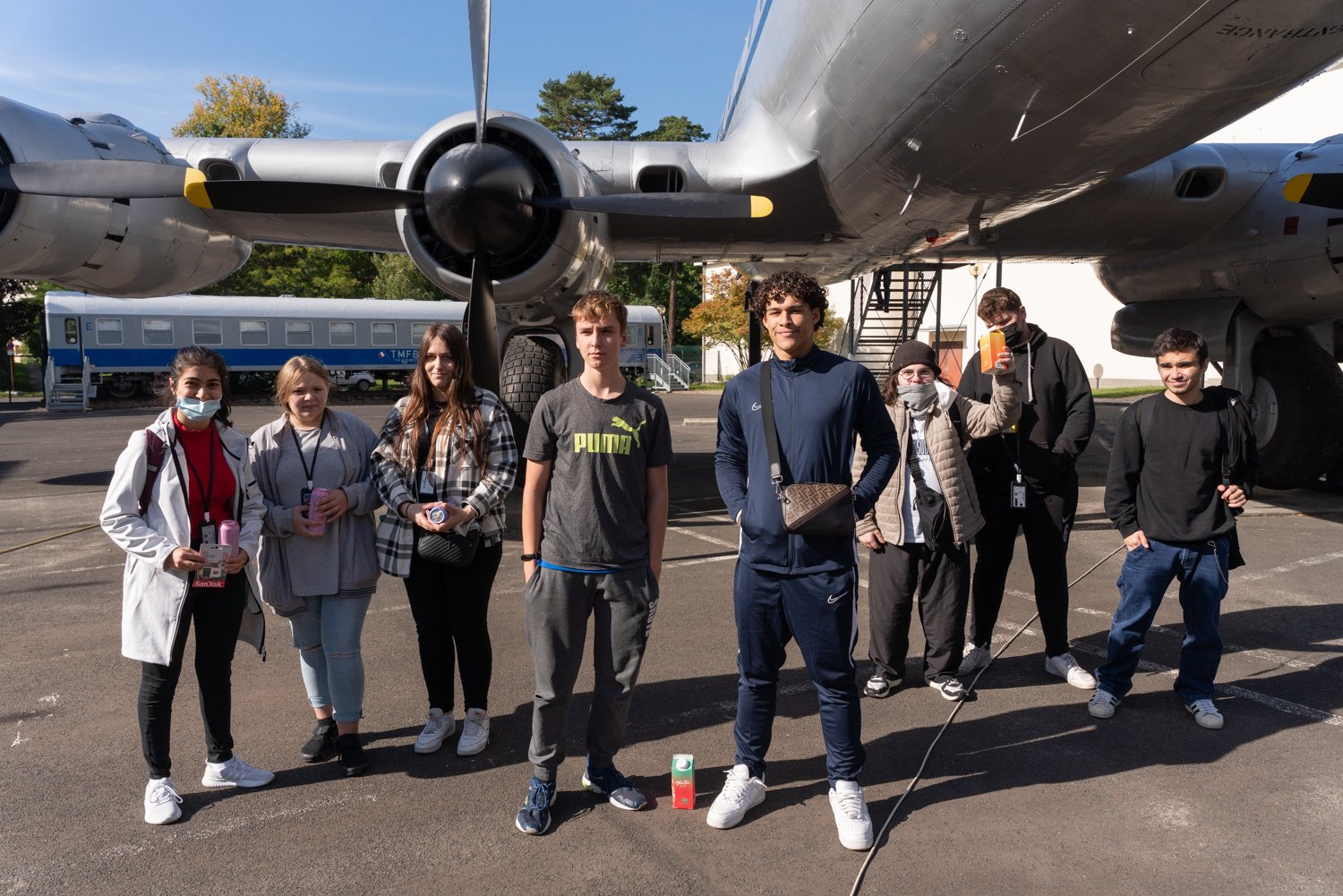
The first of the workshops took place at the Allied Museum in Dahlem, Berlin. The Allied Museum was founded in 1998 and preserves the historical heritage of the allied forces in Berlin.
Allied Museum
Workshop #1
In total 24 students, aged 14 to 15, participated in the workshop. They were accompanied by Philip Bobke, an English and history teacher from Rüttli Schule. The workshop was led by documentary photographer Max Ernst Stockburger and his assistant, Nils Heck, a photography student from HS Hannover. Stockburger grew up directly next to a U.S. military installation in southern Germany, which has deeply shaped his own photographic work. For more than a decade Stockburger has been working on photography projects dealing themes connected to U.S. society and politics.
Nikon supported this workshop by loaning us 10 Nikon Z50 cameras, which were handed to the students for the photography scavenger hunt.
The first part of the workshop was an hour-long guided tour through the museum, organized and conducted by the Allied Museum. The tour itself was divided into two parts. The first part focused on the history of the local neighborhood, which had been heavily influenced by the U.S. military presence during the Cold War. By directly engaging with the students and actively asking them questions about their own lives, the guide was able to start a conversation with the students about the lives of Americans stationed in Berlin during the Cold War. For example: What would you have bought in an American supermarket? Would you have fled across the border from East to West?
The second part introduced the students to the overall topic of the Cold War and the special role Berlin played during that time. While guiding the students through selected exhibits, the guide vividly explained the political and social circumstances of that time. As this overlapped with the students’ curriculum, many of them were actively engaged in asking questions about the history of the Air Lift, East and West Berlin, and the role of the U.S. regarding the fall of the Berlin Wall. The students were fascinated by the logistical achievement of the airlift as many of them never heard of it before.
A question that came up immediately was “Why did the Americans help their former enemies?” The guide used this question to introduce them to the global political landscape of that time and thereby giving them a better understanding of how the Cold War shaped life in Berlin.
After the lunch break in the courtyard of the museum, Max Ernst Stockburger and Nils Heck took over the lead of the workshop. Both handed out small paper cards and assigned the students to write down their first thoughts when thinking about the U.S. The results ranged from “Donald Trump” to “Hollywood” to “Democracy” and “War on Terror.” After discussing the results, they handed out the camera equipment for the photography scavenger hunt, which focused on the American history of the neighborhood.
The students were instructed to work together in teams of two or three. Each team was given a camera and a digital map of the area marked with various locations. At these locations, the students could find traces of the former American presence.
For example, the former gym of the U.S. forces, which still features the original billboard, remains today. Old American signs are also located all around the former housing area. The original American street names such as, Taylor- and Flanagan-street, or the American basketball court inside a German youth center, were further evident traces of American life that the students sought out in this active exercise.
For each discovered trace, the students earned a certain amount of points reflecting the difficulty of finding it. The team photographing the most traces within two hours won. Additionally, they had the possibility to earn extra points by re-enacting two historic photographs. Therefore, the students had to find the exact location and recreate the situation and perspective to match the original historical image.
After the students independently explored the neighborhood on their historical scavenger hunt for two hours, they all met back at the museum to evaluate the results and announce the winners. In a half-hour-long debriefing, the students talked about their experiences and how the visit to the museum has changed their overall perspective of the U.S.




